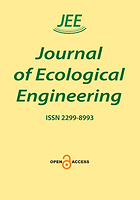
Photo from archive.org
This paper presents the results of research on the production of composite polyacrylonitrile (PAN) membranes with nanotubes (MWCNT), graphene (RG) and graphene oxide (GO) addition. All of the specified additions… Click to show full abstract
This paper presents the results of research on the production of composite polyacrylonitrile (PAN) membranes with nanotubes (MWCNT), graphene (RG) and graphene oxide (GO) addition. All of the specified additions differ diametrically in terms of properties, starting from the spatial structure of the particles, to the chemical properties. The membranes were obtained using phase inversion method from a solution of N,N-dimethylformamide (DMF). Subsequently, the impact of the nano-addition on the transport and separation properties of the membranes was investigated using Millipore AMICON ultrafiltration kit. Membranes with graphene addition (PAN/RG) are characterized by the best transport properties and the highest specific permeate flux values in the range of ~913÷1006 dm3/m2×h for the working pressure of 2.0 MPa. In order to test the separation properties, electroplating wastewater generated in one of the Silesian galvanizing plants was used. The qualitative and quantitative composition of the wastewater was tested by means of UV-Vis spectrophotometer (HACH) and absorption atomic spectrometry (AAS). The ultrafiltration process carried out on composite membranes allows for the complete removal of phosphate ions and ~88÷94% removal of iron from the waste water. The rejection coefficient of the remaining metals is high: ~35÷85% for copper and ~17÷100% for cadmium.
Journal Title: Journal of Ecological Engineering
Year Published: 2017
Link to full text (if available)
Share on Social Media: Sign Up to like & get
recommendations!